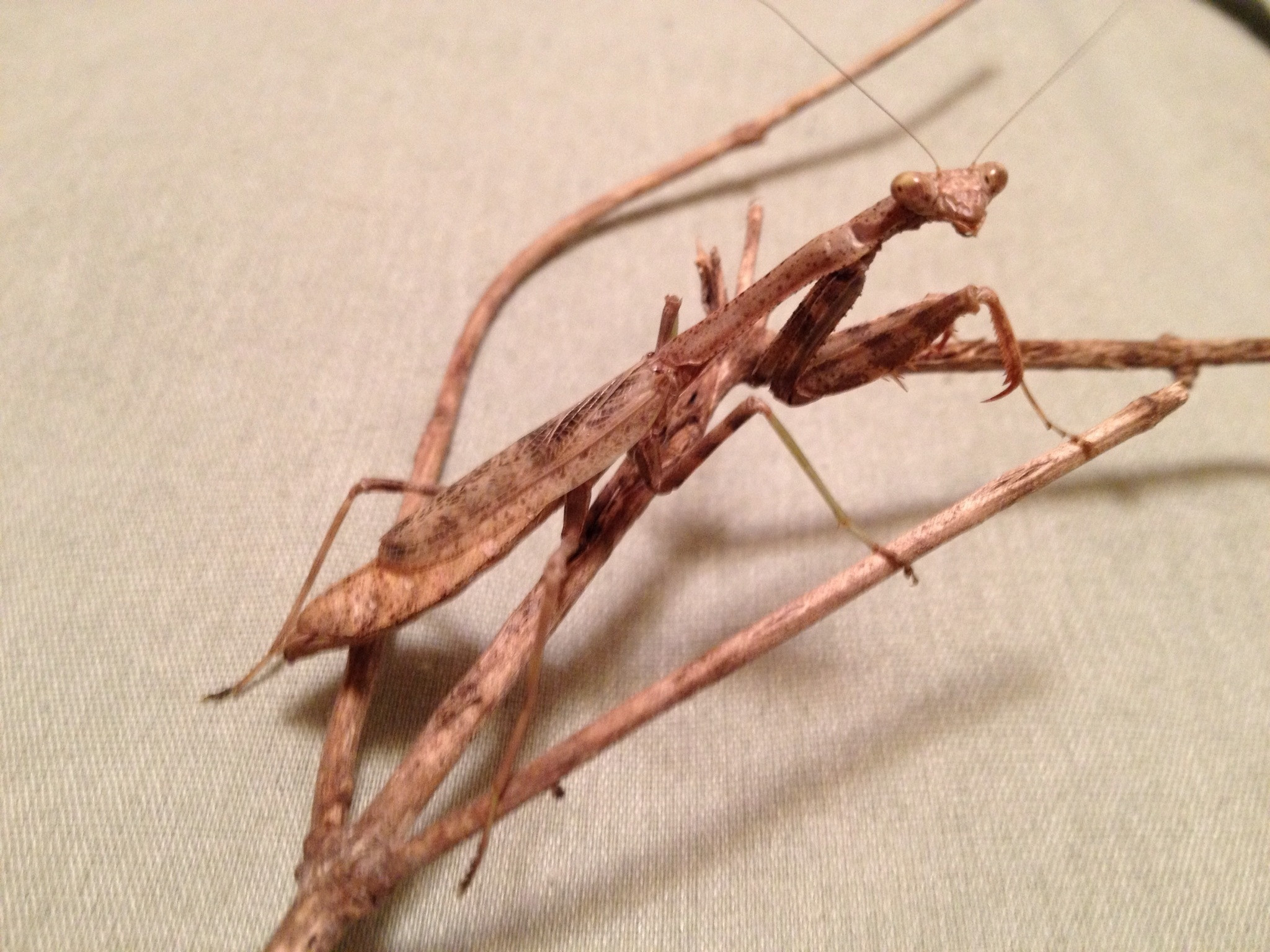Mime454
Well-known member
I've noticed that a lot of people seem to think that mantis coloration is determined primarily by genetics. Is there any proper evidence for this, or is it just something that some members postulate?
If mantis coloration were genetically polymorphic, shouldn't we expect local genetic variation in color to quickly fade away? For example, a green ghost mantis would be horribly disguised among dead, brown foliage and vice versa for the brown variety. I'd imagine that the selection pressure to be the 'right' color would be incredibly powerful. There is obviously a variance in leaf color and liveliness in a single geographic area, but obviously some areas would have more dead leaves than living ones or the other way around.
I've seen other people speculate that mantis coloration is due to "random genetics." I don't think that this reasoning is explanatory in any way. Mutations are random, yes, but allele frequency is anything but random. If color be genetically polymorphic, it simply can't be random, because of the high selection pressure mentioned above.
I could be wrong, but I think that the results we see show pretty clearly that mantis coloration is primarily influenced by the environment. We see mantids from the same ooth turning out different colors. (By the way, if we saw this in a parthenogenic mantis, it would put the final nail in the genetic coffin, so if anyone has seen this, please speak up! ) We see green mantids on live foliage and dead ones on dead foliage(in the wild).
If there has been a study that confirms that genes are the primary determinates of color, I'd definitely be willing to change my mind though!
If mantis coloration were genetically polymorphic, shouldn't we expect local genetic variation in color to quickly fade away? For example, a green ghost mantis would be horribly disguised among dead, brown foliage and vice versa for the brown variety. I'd imagine that the selection pressure to be the 'right' color would be incredibly powerful. There is obviously a variance in leaf color and liveliness in a single geographic area, but obviously some areas would have more dead leaves than living ones or the other way around.
I've seen other people speculate that mantis coloration is due to "random genetics." I don't think that this reasoning is explanatory in any way. Mutations are random, yes, but allele frequency is anything but random. If color be genetically polymorphic, it simply can't be random, because of the high selection pressure mentioned above.
I could be wrong, but I think that the results we see show pretty clearly that mantis coloration is primarily influenced by the environment. We see mantids from the same ooth turning out different colors. (By the way, if we saw this in a parthenogenic mantis, it would put the final nail in the genetic coffin, so if anyone has seen this, please speak up! ) We see green mantids on live foliage and dead ones on dead foliage(in the wild).
If there has been a study that confirms that genes are the primary determinates of color, I'd definitely be willing to change my mind though!













































